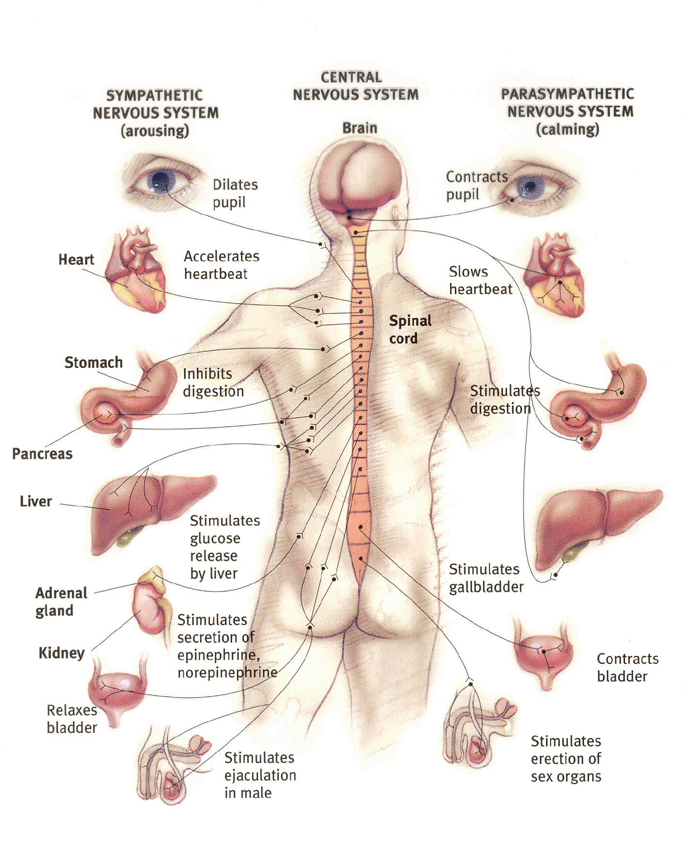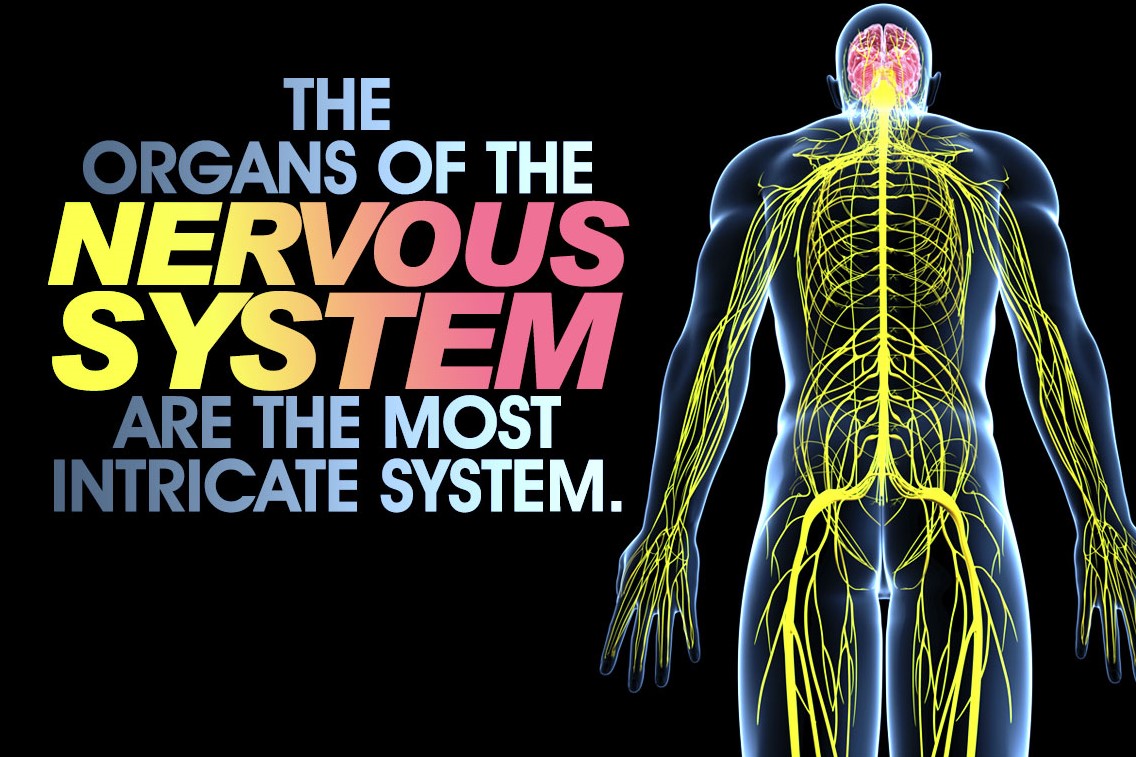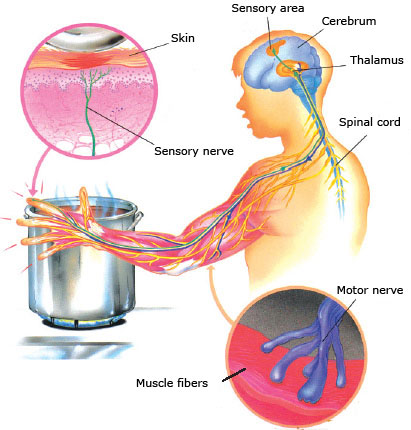The spinal cord is like an excellent telephone system, composed of millions of nerves carrying messages between the brain and all parts of the body. These messages help us feel sensitivity on our skin, feel pressure and control other vital functions of the body such as urination, breathing, bowel movement and more. The spinal cord is made up of a column of nerves and bones that move from the brain to the caudal (tail) bone. It is surrounded by bone rings called vertebrae (they protect the spinal cord), which form the spine. The spinal cord is one of the most delicate organs. A wound to the spine can lead to a rupture of the bones around the spinal cord and create pressure against the spinal cord, which can lead to nerve interference. However, the spinal cord and nerves can become impaired without the vertebrae protecting it getting broken. Just like when a phone screen has an ink spill even though the protective front layer of the screen (that serves as the point of contact) is not damaged.
A common type of spine trauma that often occurs and exists undetected is spinal obtrusion. Spinal obtrusion is a degenerative condition; it can be present for many years without external signs or symptoms, but gradually the victim experiences a loss of mobility. Spinal Obtrusion is a situation in which the body has lost the ability to maintain the integrity of the relations between the adjacent vertebrae (bones of the spine), thereby altering the environment of the spinal nerve tissue in that specific area and, therefore, interfering with the messages to and from the brain in that particular area.
Nerves run along the spinal cord; when the path is interrupted, messages cannot pass to the organs. This happens when there is a trauma/interference (spinal obtrusion) to a point in the length of the spinal cord. When there is a spinal obtrusion to a point in the spinal cord, the levels above the point of spinal obtrusion continue to work, but all levels below the point of spinal obtrusion will be affected. The point where the spinal obtrusion occurs determines the organs and the functions of the body that will be possibly affected. The anatomy of the spinal cord is divided into sections, each containing nerves that control specific areas of the body. These nerves come in and out of the spinal cord at certain points or levels, and each level passes into certain parts of the body. The spinal column has five divisions and these levels fall into different divisions/groups. The first seven levels are called the cervical group of vertebrae; they control the function of the breath, neck, and arm. Followed by twelve Thoracic vertebrae. The nerves in the Thoracic vertebrae are responsible for controlling the organs in the chest and trunk. The five lower levels in the lumbar group of vertebrae control the legs. The rest of the nerves are in the sacral group of vertebrae that control the intestine, bladder, genital, and legs. It is through these nerves that the brain controls the movement of the body.
Based on the arrangement of the nerves along the spinal column, we can identify the organs and functions of the body that will be affected when there is a spine trauma such as spinal obtrusion at any point in the continuity of the spine. The severity of the trauma and the degree of loss of body function after the spine suffers spinal obtrusion depends on the point that obtrusion occurred along the spine and “completeness or incompleteness” of the injury. The completeness or incompleteness of the injury refers to the number of messages that pass through the spinal cord. If there is no sensation or movement below the point of spinal obtrusion, this is considered a complete trauma. If there is a feeling or movement well below the level of spinal obtrusion, this is an incomplete injury.
Initially, after an injury, nerves are “shocked.” There is swelling around the spinal cord, like any other part of your body that swells when you are injured. As the swelling begins to decrease, there may be some improvement in body function below the level of trauma. Here is a list of the possible ways that a spinal obtrusion in the spinal cord can adversely affect the functions of the body.
Skeletal system
Immediately after the injury, some calcium and minerals often leave the bone. They can be deposited in the urinary system, causing stones (A hard lump produced by the concretion of mineral salts; found in hollow organs or ducts of the body). Since the victim cannot move, as they used to, the joints (knees, elbows, shoulders, etc.) may become rigid, thereby; limit movement partially or permanently.
Urinary tract system
The urinary system consists of kidneys (which filter blood and produce urine) and the bladder (which holds and then gets rid of urine). After a spinal cord injury, the kidneys continue to urinate, but the bladder may not work the way it used to. The victim may not be able to tell when their bladder is full, or cannot eject urine when necessary. The urinary bladder may contain urine, and a catheter may be needed to empty it, or the urine may come out without any control, causing urinary incontinence (peeing oneself).
Bowels
The function of the digestive system is to break down the food taken into the body into substances that are usable by the organs of the body. The bowels of a healthy individual perform this function seamlessly but after a spinal cord injury, digestion may continue, however; the ability to control the movement of the intestines can be grossly affected. When the rectum is filled; a message is sent to the brain, which then tells you to wait until you reach the bathroom. After a spinal cord injury, signals from the bowel may not reach the brain, so there may be a problem in stopping or starting the bowel movement. Depending on the level of injury, a sufferer cannot use the abdominal muscles (abdomen), which help push out the stool. Also, damage to the intestines, constipation, and impotence can occur.
Skin
The skin protects the body from the outside world, making it difficult for bacteria and microbes to enter the body. The spinal cord serves as an important messenger for your skin to protect it from pain. For example, when you sit in one position for a long time, you begin to feel uncomfortable and move around or move around in your chair; this helps prevent the development of ulcers.
After a spinal cord injury, you no longer feel discomfort and do not move, putting yourself under the threat of inflammation under pressure (pain in bed). If the wounds develop, the skin is open, and germs can enter the body, increasing the risk of serious infections.
Respiratory system
The lungs are the main organ involved in breathing; they are not directly affected by spinal cord injury. However, the ability to move air to and from the lungs depends on the muscles around the lungs. Therefore, the level of injury determines if the sufferer can cough or take deep breaths. The most important muscle in breathing is the diaphragm. It is a large domed muscle, which is located directly under the lungs. If the spinal cord injury occurs on the neck or higher, a breathing device may be required to assist with breathing.
Autonomous function
The autonomic nervous system consists of nerves controlled by the brain and spinal cord that pass both inside and outside the spinal cord. This system controls the glands, digestion, heart, temperature and blood pressure among others. After a spinal cord injury, some of the functions of the autonomous nervous system, such as the regulation of temperature and blood pressure, may be affected. The chances of this happening are high if the trauma occurred in the thoracic region or higher.
Usually, when you go out in very cold or hot weather, the body temperature does not change. After a spinal cord injury, the victim’s body temperature may rise on hot days or fall on cold ones. They can also be at risk for a severe condition called autonomic dysreflexia (sudden onset of high blood pressure). That can happen when something happens to the body below the level of the injury, and you can not feel it. The message is sent through the nerves, but it is blocked before it reaches the brain. Because your nerves cannot effectively communicate the cause of the problem, your blood pressure may increase.
Sex and intimacy
Sex, sexuality, and intimacy are closely related to each other. The feeling of attractiveness and happiness, attractiveness for others, the presence and maintenance of relationships, physical communication and the opportunity to have children is all that is associated with sex and intimacy. After a spinal cord injury, these areas often change. For men and women, loss of sensation can lead to the need to find new ways to experience pleasure. Men may have changes in erectile function, ejaculation, and fertility. In women, the birth rate does not change.
Spinal injuries heal very slowly, one of the reasons why the body has difficulties in overcoming conditions such as spinal obtrusion is because the spine is always bearing weight and is always moving and cannot escape or suspend performing its function for a period. Once there is an interference to these connective tissues, it is almost impossible for the body to overcome them, so what happens is that everything you do puts more pressure on your body and aggravates the pain in those weak areas. The nervous system is compromised more and more, and the functionality of the body deteriorates progressively.
Spinal obtrusion is a degenerative condition (the condition grows worse over time); it can be present for many years without external signs or symptoms. Loss of mobility or function from spinal obtrusion can be gradual and undetected for some time. The only way to make sure you do not have this problem is to undergo a Neurospinology checkup. For individuals who are already experiencing spine problems caused by spinal obtrusion, the condition can be managed and treated through Neurospinology. Perhaps it will be helpful for you to talk with someone whose is experienced in managing and treating spinal cord trauma. The Neurospinology centre has a program for individuals and can organize a diagnosis and treatment session with a care manager.




Do you treat people with osteoporosis?
Hi Patty. I work with all sorts of people. My techniques are gentle. I have worked with many people that have osteoporosis. Love to see you at the centre.
I’m 66 yrs old ,i have osteo arthritis ,and been suffering sciatica for 3 yrs ,also spondylitis and herniated discs ,is these procedures safe for my age and conditions ,and what location are you in cheers julie
Hi Julie. The techniques I use are very gentle and I have worked with many people in your situation. I am located in Hamilton. You can sms me on 0451937762 or you can go online and make a booking yourself.
You can book your appointment online here:
https://pftptyltd.cliniko.com/bookings
Click The NeuroSpinology Centre
Click Neurospinology and select $19 voucher
Click Alexander Oxford and then book your appointment on the calendar. I’m available Tuesday, Thursday and Saturday afternoons 1-6pm. Look forward to seeing you soon. Cheers Alex.